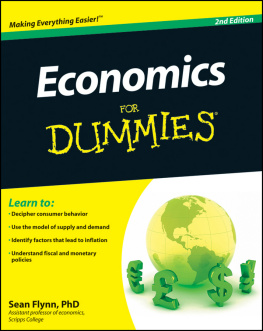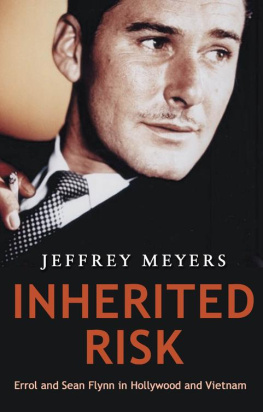Sean Masaki Flynn - The Cure That Works: How to Have the World’s Best Healthcare—at a Quarter of the Price
Here you can read online Sean Masaki Flynn - The Cure That Works: How to Have the World’s Best Healthcare—at a Quarter of the Price full text of the book (entire story) in english for free. Download pdf and epub, get meaning, cover and reviews about this ebook. City: New York, year: 2019, publisher: Regnery Publishing, genre: Politics. Description of the work, (preface) as well as reviews are available. Best literature library LitArk.com created for fans of good reading and offers a wide selection of genres:
Romance novel
Science fiction
Adventure
Detective
Science
History
Home and family
Prose
Art
Politics
Computer
Non-fiction
Religion
Business
Children
Humor
Choose a favorite category and find really read worthwhile books. Enjoy immersion in the world of imagination, feel the emotions of the characters or learn something new for yourself, make an fascinating discovery.

- Book:The Cure That Works: How to Have the World’s Best Healthcare—at a Quarter of the Price
- Author:
- Publisher:Regnery Publishing
- Genre:
- Year:2019
- City:New York
- Rating:3 / 5
- Favourites:Add to favourites
- Your mark:
- 60
- 1
- 2
- 3
- 4
- 5
The Cure That Works: How to Have the World’s Best Healthcare—at a Quarter of the Price: summary, description and annotation
We offer to read an annotation, description, summary or preface (depends on what the author of the book "The Cure That Works: How to Have the World’s Best Healthcare—at a Quarter of the Price" wrote himself). If you haven't found the necessary information about the book — write in the comments, we will try to find it.
The Cure That Works: How to Have the World’s Best Healthcare—at a Quarter of the Price — read online for free the complete book (whole text) full work
Below is the text of the book, divided by pages. System saving the place of the last page read, allows you to conveniently read the book "The Cure That Works: How to Have the World’s Best Healthcare—at a Quarter of the Price" online for free, without having to search again every time where you left off. Put a bookmark, and you can go to the page where you finished reading at any time.
Font size:
Interval:
Bookmark:
Copyright 2019 by Sean Masaki Flynn, PhD
All rights reserved. No part of this publication may be reproduced or transmitted in any form or by any means electronic or mechanical, including photocopy, recording, or any information storage and retrieval system now known or to be invented, without permission in writing from the publisher, except by a reviewer who wishes to quote brief passages in connection with a review written for inclusion in a magazine, newspaper, website, or broadcast.
Regnery is a registered trademark of Salem Communications Holding Corporation
Cover design by John Caruso
Cataloging-in-Publication data on file with the Library of Congress
ISBN 978-1-62157-953-3
ebook ISBN 978-1-62157-962-5
Published in the United States by
Regnery Publishing
A Division of Salem Media Group
300 New Jersey Ave NW
Washington, DC 20001
www.Regnery.com
Books are available in quantity for promotional or premium use. For information on discounts and terms, please visit our website: www.Regnery.com.
To Rupali Chadha, Marion Mass, Christine L. Saba, Marlene Wust-Smith, Marcy Zwelling, and the many thousands of their fellow physicians who are leading the fight in Washington and in our state capitals against the cronyism and insider dealing that dominate our healthcare system.
I ve got great news. In fact, Ive got such great news that most peoples first reaction is going to be total and utter disbelief.
Most people cant imagine that another country has used forgotten American ideas to not only deliver the worlds best healthcare, but deliver it for 75 percent less than what Americans pay for healthcare now. Even more unimaginable is the fact that this other country ensures that every resident has access to the same high-quality care. This country does not put the elderly, the poor, or veterans into inferior systems as America does. Everyone participates in the same health insurance system. Everyone receives universal coverage. Everyonerich or poor, young or old, perfectly healthy or burdened with preexisting conditionshas access to the same providers.
People sink even further into disbelief when I explain that everything this other country is doing was not only invented here in the United States but has also been demonstrated to work equally well here in America by local and state governments, as well as by major private employers.
History shows how the pressures of World War II placed the United States on a trajectory of soaring healthcare costs and unequal healthcare access. But we dont have to stay on that lousy trajectory. We can switch to what actually works . We can switch to what we ourselves invented. We would not only deliver equal access to quality healthcare; we would also save 75 percent on healthcare costs system-wide .
We currently spend about 18 percent of national income on healthcare.
Pause for a moment and consider the following: If we had just fixed our healthcare system and slashed its costs by 13 percent of national income, what would you want to do with the savings? Here are my suggestions. We could take 1 percentage point out of the 13 to fix Social Security; take another 4 percentage points to balance the federal budget deficit; and then still have 8 percentage points of national income about $1.6 trillion per year to spend on other things, like improving our schools, strengthening our infrastructure, and paying off our national debt.
My plan would also bring back millions of high-paying manufacturing jobs. Right now, General Motors estimates that the total of its annual healthcare spending amounts to $2,000 per vehicle produced by the company. If we cut healthcare costs by 75 percent, General Motors could slash the price of a new car by $1,500 (75 percent of $2,000). Thats the kind of savings that would allow American manufacturing firms to seriously compete against low-wage foreign competition. Its the kind of savings that would bring back millions of high-paying manufacturing jobs.
The benefits of fixing our broken healthcare system would extend far beyong manufacturing. Our hideously costly healthcare system has slashed take-home pay in every sector of the economy. Productivity growth that otherwise would have flowed into workers paychecks was instead misdirected into our healthcare system as employers struggled to keep up with soaring health insurance premiums.
My plan would solve that problem by making healthcare costs plummet by 75 percent. Health insurance costs would plummet too, and as a result, take-home pay and savings would soar. The benefits would be remarkable.
This book tells the story of how we lost our way and how we can find it again. It is the story of how we can deliver the worlds best healthcare for 75 percent less. It is a guide for reforming Americas healthcare system with successful, time-tested, all-American principles.
I hope you will read carefully and then share with your friends. Together, we can deliver the worlds best healthcare to every American at the worlds lowest cost.
I was on a private fact-finding trip. I had come halfway around the world on my own time, on my own dime. I was in Singapore seeking confirmation.
The statistics Id read hadnt quite convinced me. They indicated that Singapore was delivering the worlds best healthcare at the worlds lowest costs. But to a cynical economist like myself, that combination of the worlds best healthcare at the worlds lowest costs seemed way too good to be true. So, Id flown nineteen hours from LAX to examine Singapores healthcare system in person.
I wanted answers that I couldnt get from columns of numbers glowing on a computer screen. I wanted confirmation that the statistics werent lying. I wanted to know if the outcomes were really that good and the costs really that low. And I wanted to know if what they were doing might also work back home in the United States.
I brought enough money to stay for a week, and I asked one local after another what they thought of Singapores healthcare system. I asked medical doctors, dentists, and nurses. I asked former public health officials. And I asked virtually every taxi driver, shoeshine boy, waiter, and shop clerk I happened to meet.
On the third day, I was in a cab heading back to the Central Business District after visiting a government-run polyclinic. I had chosen this specific clinic because it was located in one of Singapores poorest neighborhoods. I wanted to see what public healthcare was like in one of the poorest places in the country.
I had been impressed. The three-story clinic was modern, clean, and efficient. People in the neighborhood could drop by to obtain nearly every outpatient service imaginable, including urgent care and physical therapy. There was also a pharmacy, so prescriptions could be filled immediately on site. Major surgeries and trauma cases were assigned to hospitals, but the neighborhood polyclinic could provide care for just about everything else.
I left after a senior nurse at the polyclinic asked me to stop taking photographs. I can understand why my behavior seemed out of place; she couldnt understand why anybody would be impressed by her polyclinic. She was used to it, as were the patients. I didnt explain that I wanted to take pictures to show people back home how well everything was run. I simply apologized, shook her hand, and grabbed a taxi back to my hotel.
The next fifteen minutes were a revelation. My cabbie was about fifty-five-years-old, of medium build, and as chatty as your favorite uncle. He was of Chinese ethnicity, as is 70 percent of Singapores population. We talked about local politics, rugby, and finally, healthcare.
I asked him directly: What do you think about Singapores healthcare system?
Next pageFont size:
Interval:
Bookmark:
Similar books «The Cure That Works: How to Have the World’s Best Healthcare—at a Quarter of the Price»
Look at similar books to The Cure That Works: How to Have the World’s Best Healthcare—at a Quarter of the Price. We have selected literature similar in name and meaning in the hope of providing readers with more options to find new, interesting, not yet read works.
Discussion, reviews of the book The Cure That Works: How to Have the World’s Best Healthcare—at a Quarter of the Price and just readers' own opinions. Leave your comments, write what you think about the work, its meaning or the main characters. Specify what exactly you liked and what you didn't like, and why you think so.









